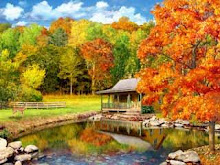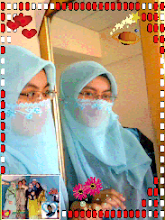Assalamualaikum
Hi readers, this entry this time is about coral reef. Have u ever touch and see it with your own eyes?If you've ever visited an aquarium or gone snorkeling when on holiday, you're probably familiar with a wide variety of corals. You may even know that corals play a fundamental role in defining the structure of marine reefs, the most complex and diverse ecosystems in our planet's oceans. But what many don't realize is that these creatures, which resemble a cross between colorful rocks and various bits of seaweed, are in fact an animals. And amazing animals at that. Can u see this picture? This is the coral reef that I touched and see with my own eyes during the vacation at Port Dickson. Honestly, I'm amazed with this wonderful creature.
Can u see this picture? This is the coral reef that I touched and see with my own eyes during the vacation at Port Dickson. Honestly, I'm amazed with this wonderful creature.
Although I didn't dive in the sea since the weather was not quite good that day(snorkeling was canceled), but the guide that brought us to the sea was very polite. He himself dived and got 2 coral reefs for us!
Thanks a lot!
In this entry, I'd like to explore ten things we should all know about coral, what makes them animals and what makes them so unique.
This article is extracted from: http://animals.about.com/od/cnidarians/a/tenthingscoral.htm
1. Corals belong to the Phylum Cnidaria. Other animals that belong to the Phylum Cnidaria include jellyfish, hydrae, and sea anemones. Cnidaria are invertebrates (they do not have a backbone) and all have specialized cells called nematocysts that help them capture prey and defend themselves. Cnidaria exhibit radial symmetry.
2. Corals belong to the Class Anthozoa (a subgroup of the Phylum Cnidaria). Members of this group of animals have flower-like structures called polyps. They have a simple body plan in which food passes in and out of a gastrovascular cavity (stomach-like sac) through a single opening.
3. Corals typically form colonies consisting of many individuals. Coral colonies grow from a single founder individual that divides repeatedly. A coral colony consists of a base that attaches coral to a reef, an upper surface that is exposed to light and hundreds of polyps.
4. The term 'coral' refers to a number of different of animals. These include hard corals, sea fans, sea feathers, sea pens, sea pansies, organ pipe coral, black coral, soft corals, fan corals whip corals.
5. Hard corals have a white skeleton that is made of limestone (calcium carbonate). Hard corals are reef builders and are responsible for the creation of the structure of a coral reef.
6. Soft corals lack the stiff limestone skeleton that hard corals possess. Instead, they have little limestone crystals (referred to as sclerites) embedded in their jelly-like tissues.
7. Many corals have zooxanthellae within their tissues. Zooxanthellae are algae that form a symbiotic relationship with the coral by producing organic compounds that the coral polyps use. This food source enables the corals to grow faster than they would without the zooxanthellae.
8. Corals inhabit a wide range of habitats and regions. Some solitary hard coral species are found in temperate and even polar waters and occur as far as 6000 meters below the surface of the water.
9. Corals are rare in the fossil record. They first appeared in the Cambrian period (570mya). Reef-building corals appeared during the middle of the Triassic period (251mya - 200mya).
10. Sea fan corals grow at right angles to the current of the water. This enables them to efficiently filter plankton from the passing water.
Oh, no....I'm in love with coral reef....shikata ga nai ne...
kawaii kara (^_^)










0 comments:
Post a Comment